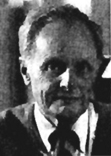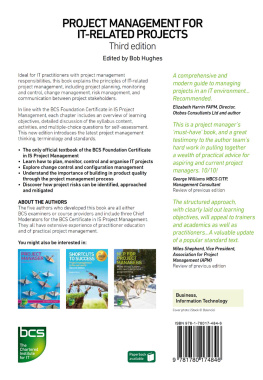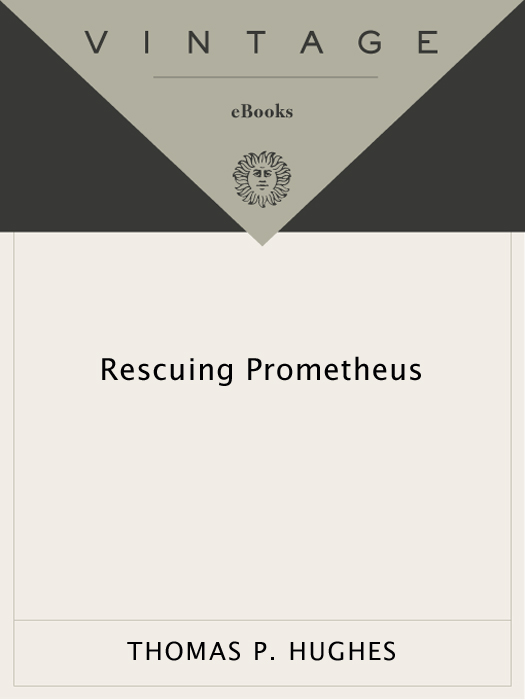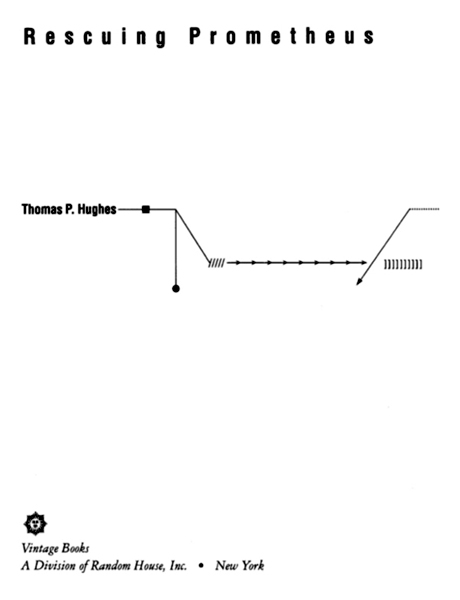Acclaim forThomas P. Hughess
Rescuing Prometheus
Impressive. A studied, case-based celebration of giant systems and their gung-ho architects.
Across the Board
Rescuing Prometheus is an interesting book that portrays a unique period in the United States when new approaches to difficult problems led to unparalleled advances in management.
The Courier-Journal
[A] thoughtful and original book.
Library Journal
Hughes, a Pulitzer Prize finalist extends his efforts at chronicling the history of technology development with this new title. The book provides an in-depth look at the creation of the pioneering Semiautomatic Ground Environment defense system; the first intercontinental ballistic missile, called Atlas; a major highway construction project that is burrowing a tunnel under the city of Boston; and the computer network that laid the foundation for todays Internet.
Morning Star-Telegram
Hughes is convincing.
Chicago Tribune

Thomas P. Hughes
Rescuing Prometheus
Thomas P. Hughes is Emeritus Mellon Professor of the History and Sociology of Science at the University of Pennsylvania and a Fellow of the American Academy of Arts and Sciences. His books include American Genesis: A Century of Invention and Technological Enthusiasm. Currently a Distinguished Visiting Professor at MIT, he lives in Philadelphia.
Also by Thomas P. Hughes
American Genesis: A Century of Invention and Technological Enthusiasm
Elmer Sperry: Inventor and Engineer
Networks of Power: Electrification in Western Society, 18801930
Lewis Mumford: Public Intellectual (with Agatha Hughes)
FIRST VINTAGE BOOKS EDITION, MARCH 2000
Copyright 1998 by Thomas P. Hughes
All rights reserved under International and Pan-American Copyright Conventions. Published in the United States by Vintage Books, a division of Random House, Inc., New York, and simultaneously in Canada by Random House of Canada Limited, Toronto. Originally published in hardcover in the United States by Pantheon Books, a division of Random House, Inc., New York, in 1998.
Vintage and colophon are registered trademarks of Random House, Inc.
Grateful acknowledgment is made to the following for permission to reprint previously published material: Aviation Week & Space Technology: Excerpts from Human vs. Hardware by Dean S. Warren (Aviation Week & Space Technology, June 7, 1971, p. 63). Reprinted by permission of Aviation Week & Space Technology. The New York Times: Excerpt from Man in the News (The New York Times, December 1957). Copyright 1957 by the New York Times Company. Reprinted by permission of The New York Times.
The Library of Congress has catalogued the Pantheon edition as follows:
Hughes, Thomas Parke.
Rescuing Prometheus / Thomas P. Hughes.
cm.
eISBN: 978-0-307-77326-5
Research, IndustrialUnited States. 2. TechnologyUnited StatesHistory20th century. 3. TechnologySocial aspectsUnited States. 4. Science and industryUnited States. I. Title.
T176.H84 1998
303.483dc21 97-44571
www.vintagebooks.com
v3.1
For Agatha, whose spirit lives in this book
Contents
I Introduction:
Technologys Nation
Changes in the worlds political, economic and technological realms in the past century have placed great stresses on approaches to management and system design. The changes that have had the greatest impact are the increase in size and complexity of the human organizations and technical systems needed in the world today, and the rate of change in the external environment with which these organizations and systems must cope.
Joel Moses, Provost, MIT
During the late eighteenth and early nineteenth centuries, the United States was natures nation. By the twentieth, it had become technologys nation. Americans had transformed a natural world into a human-built one characterized by technological systems and unmatched complexity. In doing so, they demonstrated a technological prowess unequaled elsewhere in the world. Although Americans take more pride in their political history than in their technological, the remainder of the world stands in awe of the technological transformations they have wrought. The post-World War II period we shall consider witnessed the continuation of a technological transformation that can be seen as a second creation; the first was mythologized in the book of Genesis.
Telling the story of this ongoing creation since 1945 carries us into a human-built world far more complex than that populated earlier by heroic inventors such as Thomas Edison and by firms such as the Ford Motor Company. Post-World War II cultural history of technology and science introduces us to system builders and the military-industrial-university complex. Our focus will be on massive research and development projects rather than on the invention and development of individual machines, devices, and
This book tells of the design and development of four projectsSAGE, Atlas, Bostons Central Artery/Tunnel, and ARPANETthat exemplify the ways in which large systems are created, ones representative of post-World War II technology.
The Atlas Project of the 1950s, which produced the first intercontinental ballistic missile, changed the complexion of both the Cold War and the aerospace industry. From Atlas, a mode of management known as systems engineering emerged and has spread throughout the military and industrial worlds and even into government agencies.
Bostons Central Artery/Tunnel Project (CA/T), begun in the late 1980s and continuing into the next century, has become the countrys largest urban highway project. Like other large construction projects, it changes the built environment in which we lead our lives. In the course of the project, transdisciplinary teams solve engineering problems and manage the coordination and scheduling of the numerous subcontractors. By using a systems engineering mode of project management, engineers and managers of the joint venture firm of Bechtel/Parsons Brinckerhoff cope with even greater messy complexity than that present during the SAGE and Atlas projects. They must respond to countless environmental and other interest groups that help shape the design of the Boston project.
The ARPANET, a project of the Defense Departments Advanced Research Projects Agency (ARPA), opened the information highway. Initiated in the late 1960s, the project displays problem-solving approaches that have come to characterize recent projects, especially in the computer industry. These include a flat, collegial, meritocratic management style as contrasted with a vertical, hierarchical one; the resort to transdisciplinary teams of engineers, scientists, and managers in contrast to reliance on discipline-bound experts; the combining of diverse, or heterogeneous, physical components in a networked system instead of standardized, interchangeable ones in an assembly line; and a commitment by industry to change-generating projects rather than to long-lived processes. Like the other postwar projects, ARPANET depended upon a joint venture that combined government, industry, and university resources to provide the creative technological and managerial resources needed.








